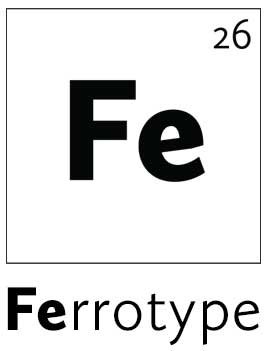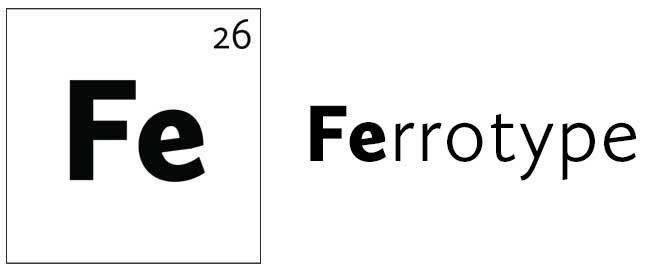How the iPhone helped the stationery market
How stationery changed after 2007
Hindsight is so often a lazy way of joining the dots of history to create a simple linear story. We can then file it away in our minds without worrying about the more complicated reality. Is this the case when looking at the launch of the iPhone in 2007? Was this the single most significant event of the early twenty-first century? The impact of the iPhone has been well established, but here is a spin-off theory - did the launch of the iPhone create the demand for craft industries we enjoy today?
Of course that is hyperbole turned up to 11, but something did happen around that time that caused a significant change in our demand. Here at Ferrotype we look at life from a stationery-centric point of view, and this certainly matches our experience. However you can also look to two other notable ‘craft’ industries, vinyl records and micro-breweries, that also mirror the changes we have seen.
Micro-breweries and craft beer
If you were to go back in time to the early twenty-first century and visit a pub you would likely see a familiar roll-call of beers, from Guinness to Stella Artois via Becks, Heineken and Carling. Whilst you might see the same beers today you can quite easily find yourself in a pub that sells none of the above. I am no beer aficionado but even I sensed something afoot on my commute home about 10 years ago. In the arches below Kentish Town West station a series of shiny new containers and pipes were appearing. It was the arrival of the Camden Town Brewery. In Kentish Town but let’s not split hairs over minor details. This intrigued me since our business at the time was also based in an arch just along the tracks from the brewery.
We soon outgrew our arch and moved away from Camden, and soon after so the Camden Town Brewery became the enemy of the microbrewery world by selling out to Anheuser-Busch InBev, one of the giants of the beer world. I am not here to delve into the complicated morals of to sell or not to sell, but it was a huge indication of how far the craft beer world had come in so little time. Now there is no ground zero for the rise of craft beer in the UK, but Brewdog started in 2007 and the Camden Town Brewery started in 2010. By 2015 CTB had been bought out for £85m and two years later the punk ethos of Brewdog was no barrier to a £213m private equity injection of cash, valuing it at over £1bn. Major breweries had to quickly react to the changing world – look at Guinness, who launched their ‘craft’ lager Hop House 13 in 2015. The years from around 2007 to 2010 seem quite significant in the craft beer world.
UK Craft Beer demand increasing - registered trademarks
The point here is that for most of my fifty years beer has been a fairly static choice. Yes the Double Diamond lager of my childhood was replaced by Kronenberg and Stella Artois. The latter had been around forever but it was a 1980’s and 90’s marketing idea to make it "reassuringly expensive". It was still a brand name owned by a major brewery, and the industry only became more consolidated over the years. So in a few short years start-up micro-breweries were worth millions if not a billion. That’s quite a change.
Vinyl records
The music industry has undergone many changes. Where we once consumed it through vinyl, then cassette (C90 anyone?), we then once saw CDs as the shiny future. CDs were consigned to the music reject pile overnight thanks for MP3 files on iTunes, only to see streaming consign iTunes to the same historical footnote. So it really is strange to see how much we have embraced vinyl records in recent years.
Again, UK sales of vinyl bottomed out around 2007, and had shown a turning point somewhere around 2010. Yet by 2016 Tesco and Sainsburys were selling them, a mark of how demand had become mainstream.
Premium stationery
And so to stationery. We have been involved in the stationery world for 25 years, since opening Bureau in Covent Garden back in 1995. The UK stationery world was a fairly drab affair back then. Within 10 years Bureau was an e-tailer having dropped all of its shops and whilst we could claim we saw the future of retailing was shifting online, there was no sense of how the demand for stationery would change in the years ahead. In those first 10 years UK stationery did not dramatically change, and it was hard to notice it change in the following 10 years, but change it did.
Sometimes even significant change can ripple through your life imperceptibly. A bit like the boiling frog syndrome (without the bad ending!), by the early 2010’s it was clear the stationery world had changed for the better. Cult stationery shops we lust over today like Present & Correct or Choosing Keeping were launched in these years (2009 and 2012 respectively) and by 2011 the demand was enough to see a dedicated UK trade show launched in London.
The London Stationery Show trade fair
There is little (well, nothing in fact) in the way of statistical data on this market so when it comes to the quality end of the stationery market it is more anecdotal than factual. But the changes are there for all to see – Moleskine, arguably the brand name that defines this niche market, saw its sales more than triple in the years 2010 to 2015. And where once Moleskine was the only choice, it now defines a genre that covers books from Leuchtturm1917, Rhodia, Castelli and more.
In the wider market, there has been a move towards personalisation, perhaps embodied nowhere more so than with Not On The High Street, or NOTHS. This umbrella shop was launched in 2006 to showcase products not easily found elsewhere. Today it seems primarily focused around a demand for goods that speak to people as individuals – a quick search on the NOTHS site today for the term ‘personalised’ gave 1,989 products to choose, from keyrings to cocktail shakers.
The beauty of imperfection
So what is the conclusion here? Well it has been well documented elsewhere how the iPhone changed our world. Perhaps more than anything, the iPhone was that missing link between us and the internet. Where once we had phones for calls and texts, Playstations for gaming and computers for pretty much everything else, now we have our phones. And they are always on. To me that is the crucial difference – until we see a chip embedded under our skin a smartphone will be the ultimate permanent connection from us to pretty much everything. And now it controls our lives, even acting as the central link to other gadgets from watches to fridges to our central heating.
Whilst we accept and even desire the connections and control a smartphone can give us, there is also a part of us that clearly craves something real and tactile. The imperfections of listening to the crackle of a vinyl record or the unexpected flavours of a new beer is what we also seek when discovering how a new ink from Poland will work on a some much-discussed new paper from Japan. In our pursuit of getting everything right we have learnt that we actually miss getting it wrong. Sometimes it feels a bit emperor’s new clothes, where our demand exceeds reality. Do many craft beers taste that different to their big brand nemeses? How many vinyl records sit unplayed on a bookshelf? I know from personal experience that many a notebook, pen and bottle of ink has been bought with no actual need for them. Maybe we buy them them to seek comfort in what they represent as much as what they can actually do?
Whatever the reason for why we buy, the fact is we do. The relentless perfection and 24x7 coverage of the digital world can be overwhelming so maybe, when the iPhone first dropped into our lives at the end of the 2000’s, we all subconsciously made a decision to seek out an antidote to it all in order to cope. Maybe stationery (and beer, vinyl, knitting, adult colouring books and even steam trains) serve a more important role in our lives than we appreciate.







